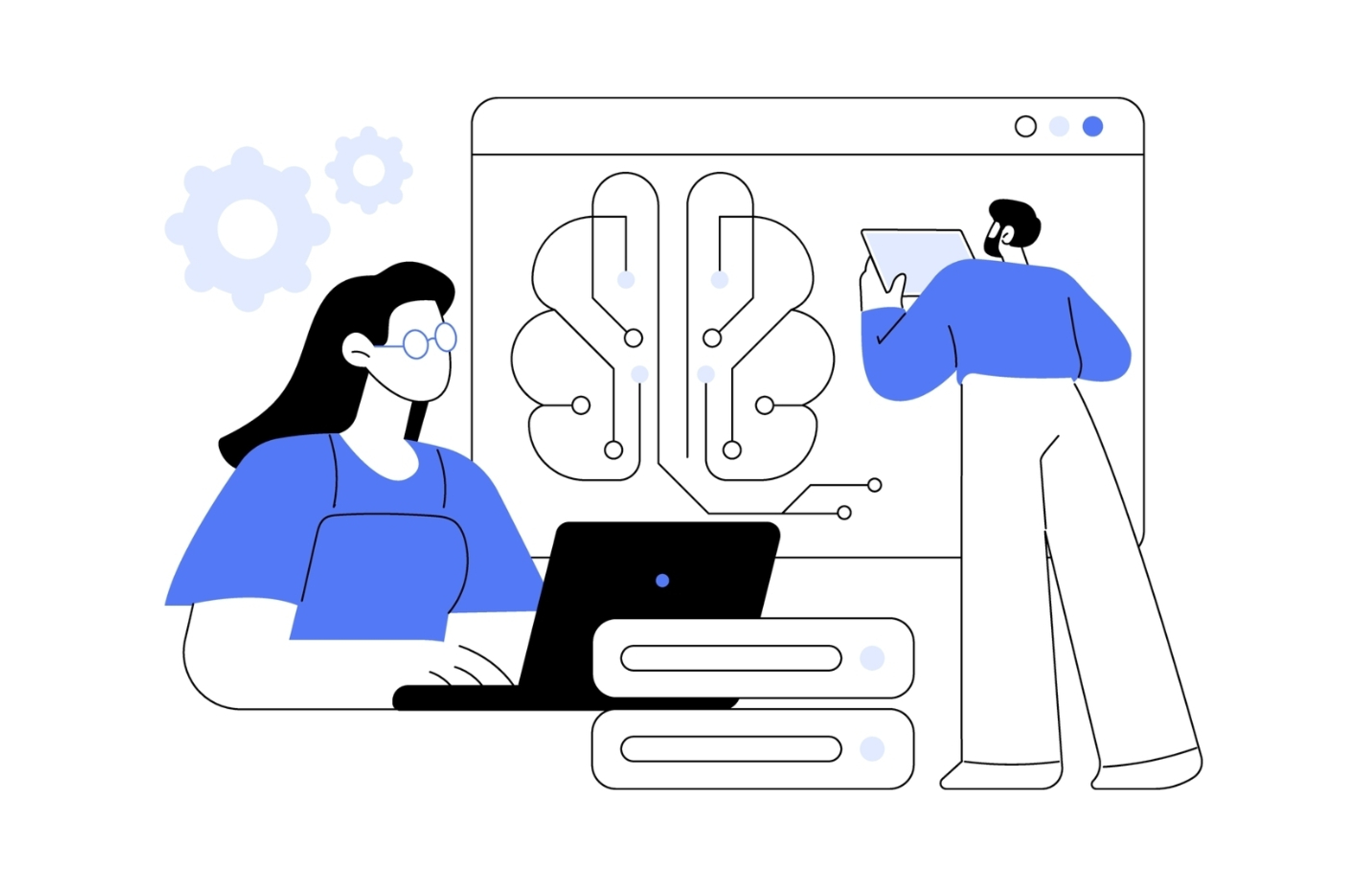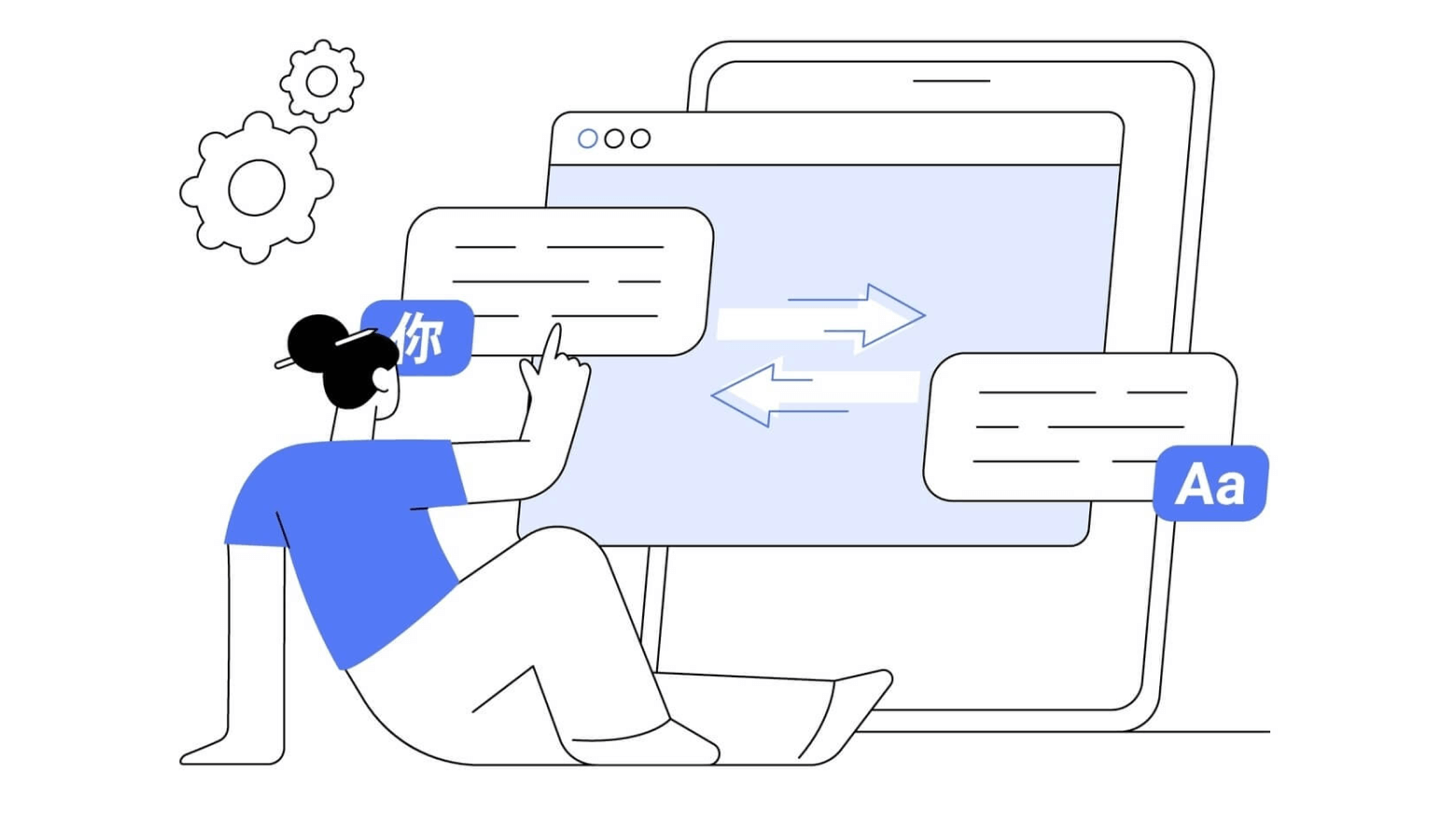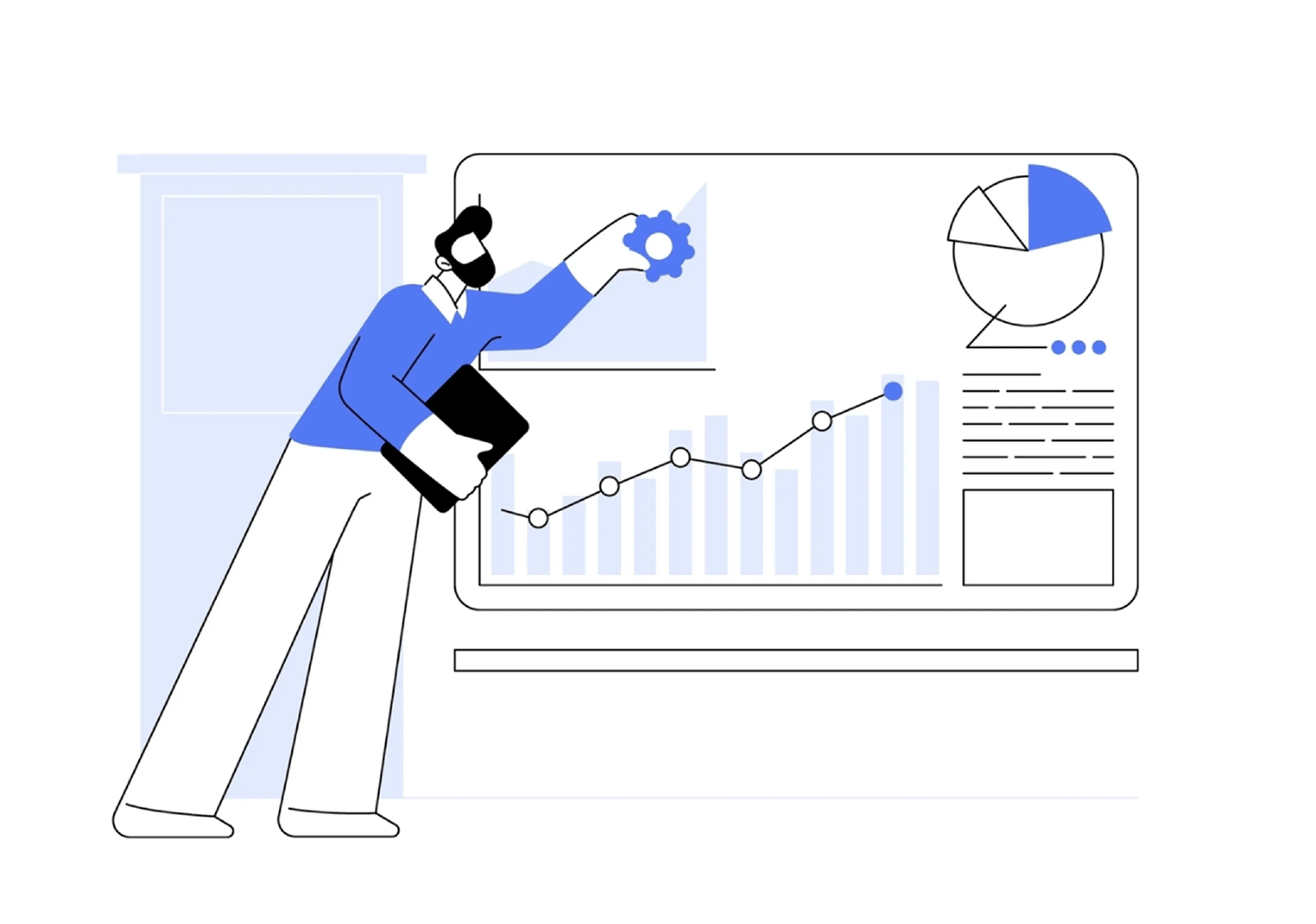Selecting an MT engine is far from straightforward. The market is crowded with cloud-based solutions offering impressive general-purpose translation quality, but these systems vary dramatically across language pairs, domains, and content types. More importantly, they introduce risks and limitations that most enterprises cannot afford: data exposure, regulatory non-compliance, lack of control over model behavior, and the inability to tailor MT output to highly specific business requirements.
This article will guide you through the key factors to consider when selecting an MT engine and show why a secure, localizable, customizable solution like Lingvanex is the ideal choice for modern global enterprises.

What Makes MT Engine Selection So Challenging
With the rapid growth of machine translation technologies, organizations today face an overwhelming number of MT providers, each claiming superior performance and broader language coverage. This market saturation makes it increasingly difficult for enterprises to determine which solution truly aligns with their operational, linguistic, and regulatory needs. What initially appears to be a simple decision often reveals itself as a complex evaluation requiring transparent quality metrics, security guarantees, and a realistic understanding of operational risks.
The situation becomes even more complicated when considering the risks associated with cloud-based MT engines. Sending sensitive data, such as customer records, internal documentation, financial statements, or proprietary product information ー to external servers introduces vulnerabilities that many industries simply cannot accept. Cloud MT solutions may log, store, or process data outside controlled jurisdictions, making them incompatible with internal risk policies and major regulatory frameworks.
For organizations bound by GDPR, SOC 2, HIPAA, PCI DSS, or national data-sovereignty laws, security is no longer a desirable feature, it is a mandatory requirement that limits the applicability of most public MT tools.
As a result, modern MT selection is no longer just about accuracy. Security, compliance, and domain adaptation have become essential criteria. Enterprises increasingly prioritize MT engines that can operate in isolated environments, provide predictable performance, and support long-term scalability without exposing sensitive content.
Understanding Your Translation Needs
Before choosing a specific machine translation solution, you need to understand what tasks you plan to solve. Translation quality directly depends on the type of data, the volume of work, and the conditions of use, so it is important to determine the key parameters in advance.
- Type of Content. Legal agreements, financial reports, clinical notes, product documentation, UI strings, and marketing copy each require different linguistic handling. Engines trained on general web text often fail on domain-specific terminology or regulatory phrasing.
- Language Pairs MT systems deliver varying levels of quality depending on the translation direction. Some engines perform exceptionally well with common language pairs but may produce weaker results for rare or highly specialized languages. Determine the set of languages you truly need.
- Time, Volume, and Budget Constraints. The approach to organising translation depends on the resources available: you can use a fully automated system, combine MT with post-editing, or use additional quality control tools. The clearer you define the constraints, the easier it will be to choose the best option.
- Customization Requirements. If terminology consistency, brand voice, or regulatory precision matter, you need customizable MT. Domain-adapted models typically outperform generic engines on enterprise-grade content.
- Integration Capability. Consider how the translation system will interact with your existing workflows, such as CMS, CAT tools, or internal platforms. Reliable APIs, automation hooks, and connectors dramatically reduce operational overhead.
- Technology and Approach There are different types of MT solutions ー neural, hybrid, and industry-specific systems. It’s important to understand the underlying technology and whether it meets your requirements for quality and scalability.
- Data Privacy. If you work with sensitive information, it’s crucial to consider how the service processes and stores your data. Check for encryption, private models, isolated environments, and policies regarding data sharing with third parties.
By defining these parameters in advance, you can clearly articulate your requirements and significantly simplify the process of selecting the optimal machine translation solution.
How to Assess an MT Engine
Assessing how effectively a machine translation system handles your tasks requires time and attention, but it is essential for ensuring high-quality translations.
At Lingvanex, we regularly update our language models and language pairs to ensure high-quality translation. We have a team of professional linguists and translators who participate in testing and improving models. Our quality reports are published on our website and demonstrate how the characteristics of our models are changing and improving.
Up-to-date information about our language models, quality metrics, and test results can be found on the report page: Lingvanex Translation Quality Report.
When evaluating performance, we use recognised metrics ー BLEU and COMET. These indicators allow us to objectively measure translation accuracy and compliance with reference translations.
Each model update is accompanied by a comparative analysis: we compare new and previous versions in terms of language pairs, speed, memory usage, and translation quality. This allows our customers to see real progress and choose the most relevant models.
Automated Scoring with Neural Metrics
Recent research presented at EMNLP 2024 provides strong evidence that modern neural evaluation metrics significantly outperform traditional surface-based methods like BLEU and chrF. Using a unique six-year dataset of incremental machine translation outputs, the study demonstrates that metrics such as COMET, UniTE, and COMET-Kiwi consistently show higher reliability, stronger correlation with real system improvements, and better accuracy when ranking MT engines.
These findings reinforce the growing industry shift toward neural, semantics-aware evaluation. The study also shows that high-quality synthetic references can serve as an effective alternative to human references ー making automated scoring not only more scalable, but also fully compatible with secure, local environments. This aligns directly with the Lingvanex approach, where all metric evaluations, including neural ones, can be performed entirely on-premise without exposing any data to external cloud services.
Recent research on long-context MT evaluation (WMT 2025) shows that even the most advanced neural metrics are only beginning to incorporate multi-sentence context — coherence, consistency, and discourse flow. While this improves alignment with human linguistic judgments, these metrics remain fundamentally limited: they assess text as language, not as communication. They cannot determine whether a translation meets business intent, brand voice, regulatory expectations, or specification-driven requirements. For enterprises, this reinforces a critical point: automated metrics are valuable indicators for tracking model progress, but they cannot replace specification-aware evaluation and human oversight. This is why Lingvanex pairs state-of-the-art BLEU/COMET scoring with enterprise-grade customization, terminology control, and secure review workflows — ensuring that translation quality is measured not only by linguistic similarity, but by fitness for real operational use.
This is particularly important for enterprises that cannot submit confidential texts for external human review.
All neural metrics, including COMET, can be executed locally within the customer’s secure infrastructure ー a capability that aligns directly with the Lingvanex architecture.
Why Enterprises Need Customized MT
The choice between a generic and a customized MT engine depends on your goals and the specifics of your content. Generic MT systems are convenient for quickly translating general texts but often make errors in industry-specific terminology and style. Customized solutions allow you to adapt the model to your terms, corporate voice, and specific document formats, ensuring more accurate and professional results.
For companies handling confidential or regulated data, where accuracy and compliance are essential, customization often becomes a decisive success factor. A recent study on MT customization from 2021 showed that adapting machine translation engines with domain-relevant parallel data significantly improves accuracy and even enables the use of smaller, more efficient models.
Recent research on specification-aware machine translation (2025) shows that explicitly encoding the purpose, audience, and stylistic requirements of a text into the MT workflow can significantly improve perceived quality, even compared to official human translations in high-stakes domains such as investor relations. For enterprises, this means that effective customization is not only about training on domain data, but also about making translation specifications a first-class part of the MT pipeline.
While modern MT engines can deliver high-quality output, post-editing remains an essential step for high-value or regulated content. Customization significantly reduces the amount of required post-editing, improving consistency and lowering operational costs.
Even with a limited amount of customer data, a customized model correctly translates terms and constructions, unlike generic systems, which often make mistakes with rare or domain-specific expressions.
Enhancing Accuracy with Human-in-the-Loop
Modern machine translation engines deliver impressive accuracy, but certain texts, such as legal contracts, financial statements, or medical documentation, demand an extra layer of human oversight. Human-in-the-Loop approaches combine the speed and efficiency of MT with the expertise of professional linguists, ensuring that critical content meets enterprise standards for accuracy, compliance, and brand voice.
Recent research on human-in-the-loop approaches demonstrates that human intervention is most effective when applied selectively to high-stakes content. This framework supports the idea that humans should complement automated translation in a targeted way, maximizing accuracy while preserving the efficiency of MT workflows.
Post-editing and review can be performed entirely within the organization’s secure environment, protecting sensitive data and ensuring compliance with GDPR, SOC2, and other regulations. Feedback from human reviewers can also be used to refine and customize MT models over time, reducing the need for manual corrections while improving consistency and terminology across all critical documents.
By applying Human-in-the-Loop selectively, enterprises achieve a balance of speed, security, and precision, ensuring that translation output is not only linguistically accurate but also fully aligned with operational and business requirements.
There Is No Universal “Best” MT Engine
There is no such thing as a universally “best” machine translation engine, only the best engine for your specific use case. Translation needs differ dramatically across industries, content types, languages, regulatory environments, and security requirements. A system that excels at casual web content may fail on legal documents; a cloud-based MT engine that performs well for marketing copy may be unusable for a bank that cannot send sensitive data outside its perimeter. This is why the true challenge is not choosing the most popular MT engine, but selecting the one that fits your business context.
For enterprises, the winning combination increasingly comes down to three pillars: automation, customization, and security. Automated evaluation ensures that translation quality can be measured objectively and continuously, without costly human review. Customization enables MT models to reflect the terminology, tone, and domain expertise of each organization, delivering accuracy that generic systems cannot match. And security, especially the ability to run MT locally and remain compliant with SOC 2, GDPR, and internal policies is becoming non-negotiable for companies handling sensitive or regulated data.
Why Lingvanex Is the Ideal Choice for Enterprise MT
Lingvanex is purpose-built for organizations that require maximum security, control, and accuracy in their machine translation workflows. With fully local deployment, all translation processes run inside the customer’s infrastructure on-premise or in a private cloud, ensuring zero data leakage and making the solution suitable for industries where external cloud services are unacceptable.
The platform meets strict SOC 2 and GDPR requirements, providing enterprise-level data protection without logging, storing, or transmitting customer content to third parties. Just as important, Lingvanex offers deep customization, allowing companies to train domain-specific MT models on their own data so terminology, tone, and industry language are reflected with high precision.
Alongside security, local deployment, and deep customization, Lingvanex also minimizes the risk of vendor lock-in ーa major concern for enterprise buyers. The platform does not tie customers to proprietary cloud infrastructure: models run entirely within the organization’s environment, linguistic assets are stored in open and portable formats, and the APIs follow stable, industry-standard conventions. This gives enterprises full long-term independence, allowing them to evolve their infrastructure, scale capacity, or migrate systems without becoming dependent on a single provider.
Lingvanex also supports unlimited translation volumes, eliminating unpredictable per-character billing and making it ideal for large-scale, continuous translation pipelines. With its secure architecture, customizable models, and scalable performance, Lingvanex is a perfect fit for banks, government institutions, healthcare providers, telecom companies, and enterprise SaaS platforms ー any organization that needs reliable, compliant, and domain-accurate MT at scale.



